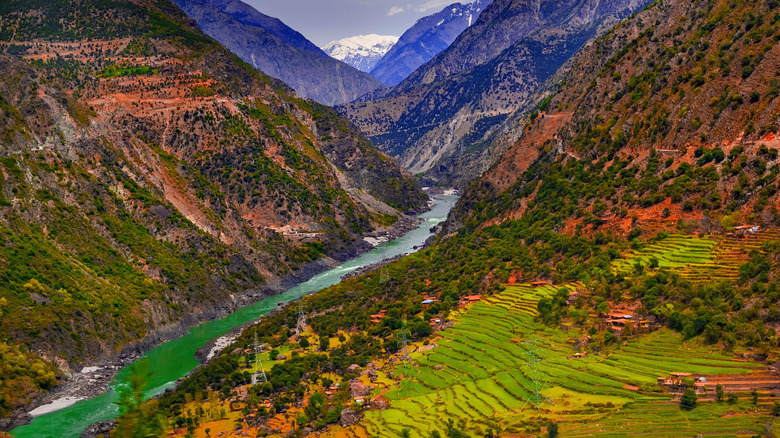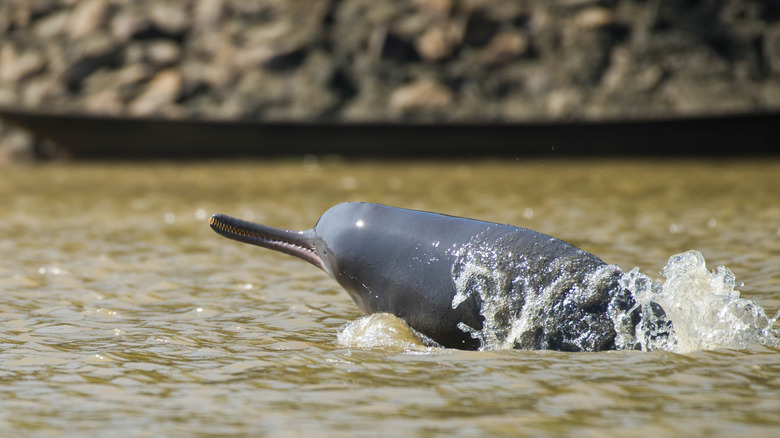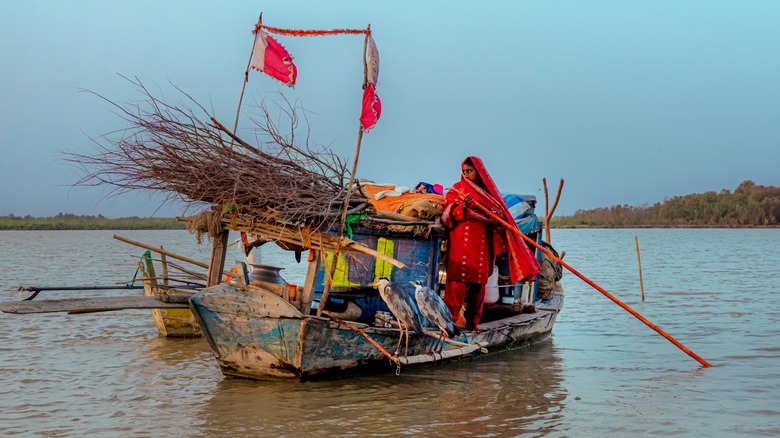Pakistan's Indus River Plays Host To A Rare Creature You Won't Find Anywhere Else
In 2022, Pakistan underwent catastrophic flooding, destroying farms and villages (per CNN). The toll on humanity has been catastrophic, killing thousands and displacing millions more. With water levels rising during the 2022 floods, no one is yet sure of the impact the disaster will have on wildlife. But some animals might actually benefit from the floods, especially in one flooded area, the Indus River. It's home to a super rare species of dolphin that is found nowhere else in the world.
Despite strict dolphin conservation efforts implemented in the 1970s, these rules didn't save the Indus River dolphins from the many challenges of having to live in proximity to humans (per the International Whaling Commission). According to NOAA Fisheries, these rare mammals have been protected by the Endangered Species Act since 1991. The International Whaling Commission's yearly surveys of the Indus River dolphins showed that in 2001, there were only about 965 of these dolphins left. Their numbers more than doubled to 1,987 by 2017.
Boats make it hard for dolphins to hear each other
The World Wide Fund for Nature Pakistan reports that even though they're supposed to be protected, the 2010s have still been a deadly time for Indus River dolphins, which are constantly getting caught up in fishing nets. NOAA Fisheries reports that the Indus River dolphins are usually between 7 feet to 8.5 feet long — females are usually bigger than males — but what they're really known for is their "melon" heads. The big round foreheads help the dolphins' hearing, which is crucial to the way they explore their surroundings and communicate with other dolphins. These freshwater creatures tend to live in pairs or sometimes in families of up to 10 dolphins, but they avoid boats and people.
Boats still cause myriad problems for the Indus River dolphin because they can easily get snared in fishing nets. As these boats drive loudly along the Indus River, dolphins can have trouble communicating with each other, even with their big melon heads to help them hear.
The dolphins are legally protected but still face lots of challenges
World Wide Fund for Nature Pakistan reports that Indus River dolphins are functionally blind, so they really rely on their hearing. Unfortunately, some dolphins have lost their hearing altogether after long-term exposure to underwater industrial activity, according to NOAA Fisheries. The creatures also like to swim on their sides, twisting in a corkscrew motion to breathe air every minute or so while skimming the water. Since they spend all their time in the water, they're susceptible to hazardous chemicals that leak in, which sometimes kill dolphins. Water pollution has affected their health and stress levels, too, per Britannica.
The dolphins are still subject to hunting. They're also blocked from freely roaming their habitat when people build dams in the river. The Indus River dolphins are fond of murky water and stick to the most shallow parts of the river (per NOAA Fisheries). Except for flood season, that is. With water swelling to flood dry land, the Indus River dolphins can easily swim to other rivers. As Pakistan underwent severe flooding in 2022, who knows what new territories these one-of-a-kind dolphins will discover.


